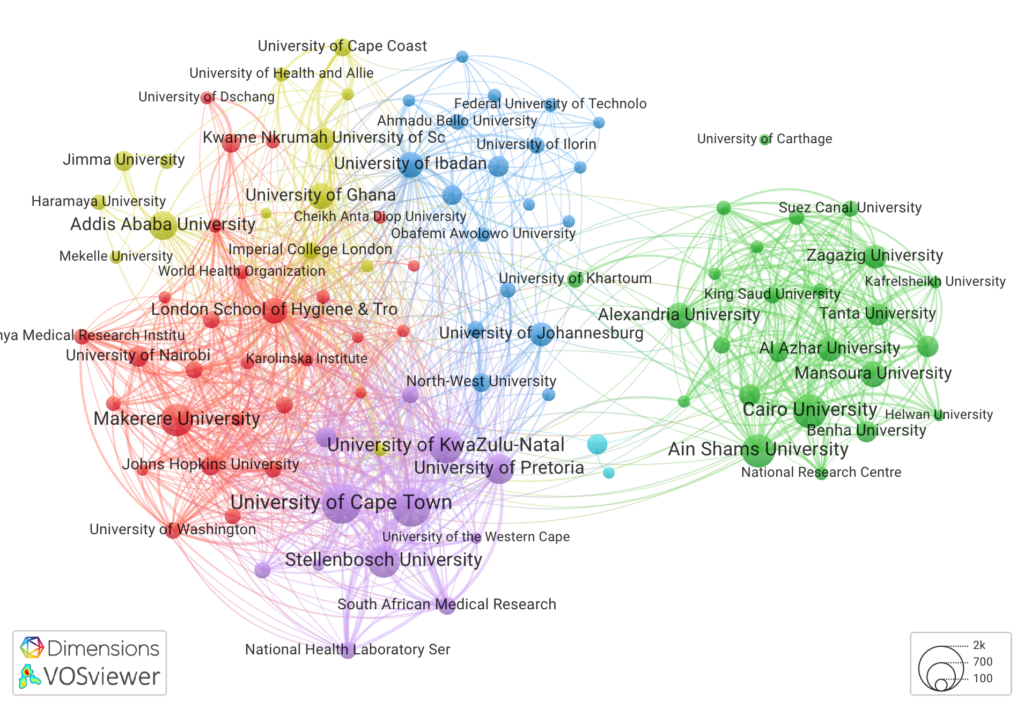The UK Collaborative on Development Research (UKCDR) recently published a blog article highlighting how a team working for Cambridge Global Challenges used Dimensions to map 7,416 publications co-authored by the University of Cambridge and researchers based in low- and lower-middle income countries (LIC/LMICs).
The post titled A new Dimension for understanding international collaboration: Mapping as a tool for assessing equitable partnerships provides insights and predicts trends in the collaborative partnerships between researchers from the University of Cambridge and those from LIC/LMICs. The aim was to find a means to address power imbalances, which the authors write, have been characteristic of such collaborations in recent decades. The authors state that mapping the publications will help identify the nature of engagement across countries and subject areas and be a valuable tool for measuring a partnership’s extent. The team used data from Dimensions to gain insights into centers of expertise at a global and in-country level and identify potential future partners in LICs/LMICs. “Understanding these trends could also help facilitate rapid coordinated responses to funding bids as well as other forms of engagement,” the authors write.

The team also leveraged Dimensions’ unique Sustainable Development Goals (SDG) filter, which has tagged more than 13 million publications by using a machine learning algorithm trained on almost 700 academic-reviewed keywords and phrases. The Dimensions database was also used to get funding insights with valuable information regarding funding sources. Although the authors state that they identified several instances where Dimensions lacks complete funder data, Christian Herzog, Chief Product Officer at Digital Science and co-Founder of Dimensions, points out that Dimensions adds funder portfolios continuously. The funding data available expands month over month. “To cast a net as wide as possible, we mine the mentions of funders from the acknowledgment section, and the grant information does not need to be in Dimensions,” he says. “We also link publications and specific grants in the Dimensions grant data. For this, however, we depend on funders providing their data to make the link between a grant and a publication,” he says.
Because the ultimate goal is to ensure equitable research partnerships between the Global North and South, the authors expressed some concern that paying for access to Dimensions could be restrictive to universities in LICs/LMICs. They acknowledge that much of Dimensions data is freely available. Still, they write that some analytical features are available only for paid subscribers, and this might deter some Universities in LICs/LMICs, which often face significant funding constraints, from accessing the database. “Some of the additional filters and functionalities are indeed only available for subscribers, and these subscriptions are required to operate, maintain, and continually develop Dimensions, a large data infrastructure and application landscape,” explains Herzog. “However, we are committed to equitable access to data, and Dimensions has been part of the Research4Life initiative since 2019. We are proud to say that Dimensions is available to all registered Research4Life users in more than 9000 institutions.”
- You can read the complete blog post on the UKCDR page
- Have a look at what Dimensions can do for you and contact us for more information
